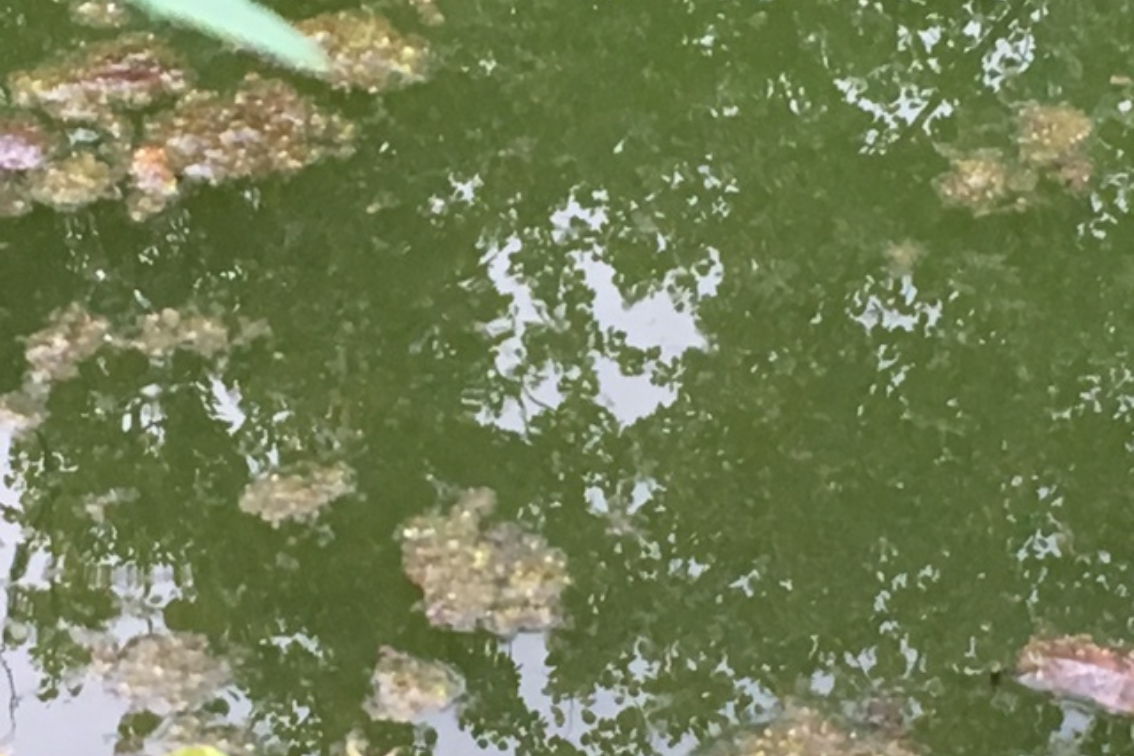If you’ve got a sewage lagoon and aren’t sure what color it should be, you’re not alone. When I first moved into a home with a lagoon system, I had no idea what to expect. Was it supposed to be green? Brown? Something else entirely? I quickly learned that the color of your lagoon water can tell you a lot about how well your system is working.
In this post, I’ll share what I’ve discovered about lagoon water color, what it means for your system’s health, and how to troubleshoot common issues.
What Color Should Your Sewage Lagoon Be?
Here’s the short answer: a healthy residential sewage lagoon typically has water that’s clear and sparkling, with green, blue, or brown hues.
Why These Colors Are Ideal
- Dark Sparkling Green: This is the gold standard! A dark green lagoon suggests that the water has the right balance of dissolved oxygen and pH. Healthy algae growth helps drive this balance, supporting the bacteria that break down sludge in your wastewater.
- Firm Blue-Green: A strong blue-green color is okay, though it may indicate high algae growth. Just be cautious during summer, as excessive algae can reduce oxygen levels in deeper areas of the lagoon.
- Brown: If your lagoon is a healthy brown, this may mean erosion or inflow of surface water. Brown algae can also appear and is perfectly acceptable.
What If the Color Changes?
Your lagoon’s water can change color due to shifts in its chemical and biological balance. Here’s what some common colors mean:
Dull Green or Yellow
A dull green or yellowish tint suggests poor pH levels. It’s not ideal and may mean your lagoon isn’t getting enough sunlight to maintain healthy algae.
Gray or Black
If your lagoon turns gray or black, this is a red flag. These colors signal anaerobic (oxygen-deprived) conditions, likely due to excessive sludge buildup. You’ll probably notice strong odors along with these darker hues.
White Foam
Foam on the surface can mean a detergent issue. If the foam is white and bubbly, it could be caused by cleaning products entering the system.
Dark Foam
Dark foam is often a sign of improper food-to-microorganism (F/M) ratios. This happens when the bacteria in your lagoon can’t keep up with the amount of organic matter.
Common Challenges with Sewage Lagoons
Sewage lagoons are a cost-effective solution, especially in areas with low population density. But like any system, they come with challenges, including:
- Overloading: More wastewater than the lagoon can handle leads to excessive sludge, slower processing, and unpleasant smells.
- Chemical Interference: Household cleaning products can disrupt the lagoon’s natural balance.
- Seasonal Variations: Changing weather conditions affect sunlight exposure, algae growth, and dissolved oxygen levels.
How to Fix Lagoon Issues
If your lagoon isn’t performing well, don’t panic. There are steps you can take to restore balance.
1. Increase Aeration
Aeration is one of the most effective ways to improve oxygen levels and speed up waste breakdown. Portable aerators can sometimes be used, but fixed systems are trickier to install.
2. Control Algae Growth
Excessive algae can choke off oxygen in deeper lagoon layers. Adding shade to reduce sunlight exposure, or using environmentally safe algaecides, can help manage overgrowth.
3. Manage Sludge and Odors
Regular maintenance is key to preventing sludge buildup and bad smells.
My Secret Weapon: Bacteria and Enzyme Treatments
After struggling with odors and slow lagoon performance, I discovered the power of bacterial and enzyme treatments. Products like Green Gobbler Septic Saver have been a game-changer for me.
Here’s why I recommend them:
- Boosts Oxygen Levels: Helps restore balance by supporting healthy bacteria.
- Breaks Down Waste: Enzymes digest grease, fats, oils, and other organic matter.
- Reduces Odors: Eliminates those nasty smells that can develop when your lagoon is struggling.
Using Green Gobbler is as easy as dropping a dissolvable pack into your toilet once a month. It works its way through your system, keeping your lagoon balanced and functioning smoothly.
Preventing Future Lagoon Problems
Here are a few tips I’ve learned to keep my lagoon in good shape:
- Avoid Harsh Chemicals: Bleach and detergents can disrupt the bacterial balance in your system.
- Monitor Sludge Levels: Keep an eye on sludge accumulation and schedule cleanouts when needed.
- Encourage Sunlight Exposure: Algae need sunlight for photosynthesis, which helps maintain oxygen levels.
- Use Enzyme Treatments Regularly: These can prevent small issues from becoming big problems.
Green Gobbler Septic Tank Treatment
Prevent septic nightmares! Green Gobbler Septic Saver, armed with powerful enzymes, safeguards your tank, prevents backups, and reduces odors. 6 months of treatment in one pack!
Let’s Talk!
Have you faced challenges with your sewage lagoon? What’s worked for you? I’d love to hear your tips, questions, or experiences in the comments below. Together, we can troubleshoot and keep our systems running smoothly!
Related article: What is safe to flush on a residential sewage lagoon?


